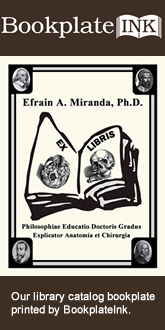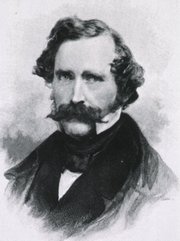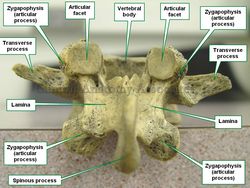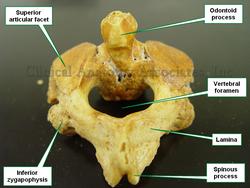
Medical Terminology Daily (MTD) is a blog sponsored by Clinical Anatomy Associates, Inc. as a service to the medical community. We post anatomical, medical or surgical terms, their meaning and usage, as well as biographical notes on anatomists, surgeons, and researchers through the ages. Be warned that some of the images used depict human anatomical specimens.
You are welcome to submit questions and suggestions using our "Contact Us" form. The information on this blog follows the terms on our "Privacy and Security Statement" and cannot be construed as medical guidance or instructions for treatment.
We have 2614 guests online

Georg Eduard Von Rindfleisch
(1836 – 1908)
German pathologist and histologist of Bavarian nobility ancestry. Rindfleisch studied medicine in Würzburg, Berlin, and Heidelberg, earning his MD in 1859 with the thesis “De Vasorum Genesi” (on the generation of vessels) under the tutelage of Rudolf Virchow (1821 - 1902). He then continued as a assistant to Virchow in a newly founded institute in Berlin. He then moved to Breslau in 1861 as an assistant to Rudolf Heidenhain (1834–1897), becoming a professor of pathological anatomy. In 1865 he became full professor in Bonn and in 1874 in Würzburg, where a new pathological institute was built according to his design (completed in 1878), where he worked until his retirement in 1906.
He was the first to describe the inflammatory background of multiple sclerosis in 1863, when he noted that demyelinated lesions have in their center small vessels that are surrounded by a leukocyte inflammatory infiltrate.
After extensive investigations, he suspected an infectious origin of tuberculosis - even before Robert Koch's detection of the tuberculosis bacillus in 1892. Rindfleisch 's special achievement is the description of the morphologically conspicuous macrophages in typhoid inflammation. His distinction between myocardial infarction and myocarditis in 1890 is also of lasting importance.
Associated eponyms
"Rindfleisch's folds": Usually a single semilunar fold of the serous surface of the pericardium around the origin of the aorta. Also known as the plica semilunaris aortæ.
"Rindfleisch's cells": Historical (and obsolete) name for eosinophilic leukocytes.
Personal note: G. Rindfleisch’s book “Traité D' Histologie Pathologique” 2nd edition (1873) is now part of my library. This book was translated from German to French by Dr. Frédéric Gross (1844-1927) , Associate Professor of the Medicine Faculty in Nancy, France. The book is dedicated to Dr. Theodore Billroth (1829-1894), an important surgeon whose pioneering work on subtotal gastrectomies paved the way for today’s robotic bariatric surgery. Dr. Miranda.
Sources:
1. "Stedmans Medical Eponyms" Forbis, P.; Bartolucci, SL; 1998 Williams and Wilkins
2. "Rindfleisch, Georg Eduard von (bayerischer Adel?)" Deutsche Biographie
3. "The pathology of multiple sclerosis and its evolution" Lassmann H. (1999) Philos Trans R Soc Lond B Biol Sci. 354 (1390): 1635–40.
4. “Traité D' Histologie Pathologique” G.E.
Rindfleisch 2nd Ed (1873) Ballieres et Fils. Paris, Translated by F Gross
"Clinical Anatomy Associates, Inc., and the contributors of "Medical Terminology Daily" wish to thank all individuals who donate their bodies and tissues for the advancement of education and research”.
Click here for more information
- Details
The Latin phrase [in situ] means "in its place". Refers to a structure that is in its place and undisturbed.
- Details
This article is part of the series "A Moment in History" where we honor those who have contributed to the growth of medical knowledge in the areas of anatomy, medicine, surgery, and medical research.
When I started the sidebar segment entitled "A Moment in History", I thought that it would be only biographical articles. On January 28, 2014, traveling from Austin TX to Cincinnati I was reading a wonderful book: "Masters of the Scalpel" (1962) by Sarah R. Riedman Ph.D. In one of the chapters Dr. Riedman writes about the first use of anesthesia in Surgery. Because of the author's style, as I read the following excerpt, I found myself wondering how it would have felt to be there while history was being made:
"On the morning of October 16, 1846, all but one of the principals were ready in the amphitheatre: Dr. Warren, the senior surgeon, his assistants and strong-armed men who were to hold the patient down, the students, and other spectators were waiting; the patient was brought in, pale with fright.
There was no turning back: everything was set for the removal of the tumor on his jaw. Only Morton (Dr. William T. G. Morton) had not arrived. Dr. Warren was ready to proceed without him, announcing to the onlookers: "As Dr. Morton has not arrived, I presume he is otherwise engaged." And he was - putting the finishing touches on his inhaler in the instrument maker's shop.
Just as the skeptical audience burst into laughter at Dr. Warren's remark, Morton appeared. The operation was held up for a few minutes while Morton prepared a sponge soaked in ether which he placed in the inhaling globe, temporarily corked.
As he came forward to the operating table on which the patient was strapped as always before an operation, Dr. Warren turned to Morton, saying: "Well sir! Your patient is ready."
But Morton wished to gain the patient's confidence. Pointing to Eben Frost ( A patient from whom Dr. Morton had removed a tooth under ether) who in gratitude had come along to the hospital, he said to the pale man: "There is a man who has been operated on under this chemical, and can tell you that it worked." Frost gladly complied.
"Are you afraid?" Morton asked the patient. Whether from courage or confidence, the patient replied, "No, I will do as you tell me."
Morton then put the neck of the flask to the patient's mouth, instructing him to breathe. Slowly the patient went under, his arms and legs jerking in a way probably familiar to frequenters at "ether frolics." As yet no one suspected what the chemical was. After several minutes, the patient was asleep and relaxed. It was now Morton's cue in the drama, as he turned to Dr. Warren. "Sir, your patient is ready."
Warren made the incision. He, like the witnesses, was ready for the bloodcurdling screams so familiar in the operating room. But the patient uttered not a sound.
The operation over, the patient slowly regained consciousness. When questioned by Morton, he readily admitted having felt no pain.
Dr. Warren then broke the silence with the famous words: "Gentlemen, this is no humbug!" And Dr. Henry J. Bigelow: "I have seen something today that will be heard round the world."
The first page of a new chapter in the story of surgery was turned that day."
While looking out the airplane window to the passing cities below, I thought about the millions of people that had been affected by this "Moment in History" and that it needed to be shared and retold to the generations to follow.
The operation took place in the first operating room built at the Massachusetts General Hospital. This room has been preserved and is today known as the "Ether Dome". You can read an article on a visit I made to this historic place. Dr. Miranda
Biographical note: Sarah Regal Riedman was born on April 20, 1902 in Kishiniev, Rumania and became a U.S. citizen in 1918. In 1926, she received a bachelor's degree from Hunter College, followed by a Masters of Science degree from New York University in 1928. In 1935, Ms. Riedman received her Ph.D. from Columbia University. She taught at Hunter College from 1926 to 1930, and at Brooklyn College from 1930 to 1952. At Brooklyn College, she was an instructor, and later an assistant professor of biology.
Ms. Riedman began writing science books for children in 1947, with the publication of "How Man Discovered His Body". Between 1947 and 1983, she wrote or co- wrote approximately forty books. We have not been able to find further information on her. Any contribution to her biography will be most welcome.
Original image (public domain) courtesy of NLM
- Details
The term [zygapophysis] is Greek. [-zyg-] means "yoked" or "paired", [-ap-] means "away" or "out", while the suffix [-(o)physis] means "growth". The term means "a paired outgrowth". Its plural form is "zygapophyses".
The term zygapophysis is used to denote four bony outgrowths or processes found in the posterior aspect of most vertebrae, arising in the zone of junction of pedicle and lamina. The zygapophyses are paired (left and right) and then they are inferior and superior. They are also called "articular processes".
Each zygapophysis presents with a smooth articular surface called an [articular facet]. Each articular facet is covered with hyaline cartilage. Two adjacent articular facets will form a synovial type joint known as a zygapophyseal joint or a facet joint.
In the cervical region the zygapophyseal joints are so close that they form a lateral pillar, known as the "lateral mass" or "articular pillar".
Arthritic degeneration of the zygapophyseal joints can lead to reduced spinal mobility and pain. The image shows the posterior view of a lumbar vertebra. Click on the image for a larger depiction.
Image property of: CAA.Inc. Photographer: David M. Klein
- Details
The suffix [-(o)cyte] arises from the Greek [κελί] meaning "a hollow vessel" or a"cell". The term [-cyt-] can also be used as a root term, also meaning "cell". Examples of its use are:
- Leukocytopenia: A combination of root terms; [leuk], means "white", and [-cyt-] means "cell". The suffix [-(o)penia] means deficiency. A white cell deficiency
- Erythrocyte: The root [-erythr-] means "red". A red cell, referring to a red blood cell
- Leukocyte: The root [-leuk-] means "white". A white cell, referring to a white blood cell
- Blastocyte: The root term [-blast-] is used to mean "to build". A cell that builds. Usually refers to a fibroblast
- Osteoclastocyte: A combination of root terms; [-oste-], means "bone", and [-clast-] means "to destroy". A cell that destroys bone.
- Details
The word [axis] arises from the Greek [άξων] meaning "axle".
[Axis] is the proper name given to the second cervical vertebra (C2). The name is from the action of C2. Because of its odontoid process and associated ligaments and joints, the axis allows the head to pivot around the axis of the odontoid process or dens.
As with all cervical vertebrae, the axis presents with foramina transversaria (no readily visible in the accompanying image), lateral masses with superior and inferior articular facets, pedicles and laminae. Usually the spinous process of C2 is bifid.
There are three atlantoaxial joints (between atlas and axis). Two of them are posterolateral, the zygapophyseal or facet joints. The median atlantoaxial joint between the atlas and the odontoid process of the axis is important in axial rotation of the head.
The superior articular processes of the axis forms part of the posterolateral atlantoaxial joints . In an uncharacteristic situation, the superior articular facet extends slightly from the lateral mass into what is considered the body of C2.
The median atlantoaxial joint components and its related ligaments, the alar ligament, the cruciform ligament, and the apical ligamen of the dens will be featured in separate articles.
Image property of: CAA.Inc. Photographer: David M. Klein
- Details
The term [odontoid] arises from the Greek [δόντι] meaning "tooth". The suffix [-oid] means "similar to". Similar to a tooth.
The odontoid process, also known as the "dens", is a tooth-like bony process found in the anterior aspect of the second cervical vertebra (C2), also known as the "axis" because of its function, serving as a pivot point to the head.
Embryologically, the odontoid process is the body of the first cervicalvertebra (C1, atlas) that has been incorporated into C2. This is proven by the presence, deep in the structure of the dens, of a small remnant of an intervertebral disc-like structure. This concept has been challenged by different authors.
The dens presents a small anterior facet to articulate with the posterior aspect of the anterior arch of the atlas (C1), a posterior area for the attachment of the alar ligaments, and a small ligament at its apex, the apical ligament, that attaches to the inferior aspect of the occipital bone.
Image property of: Photographer: David M. Klein





